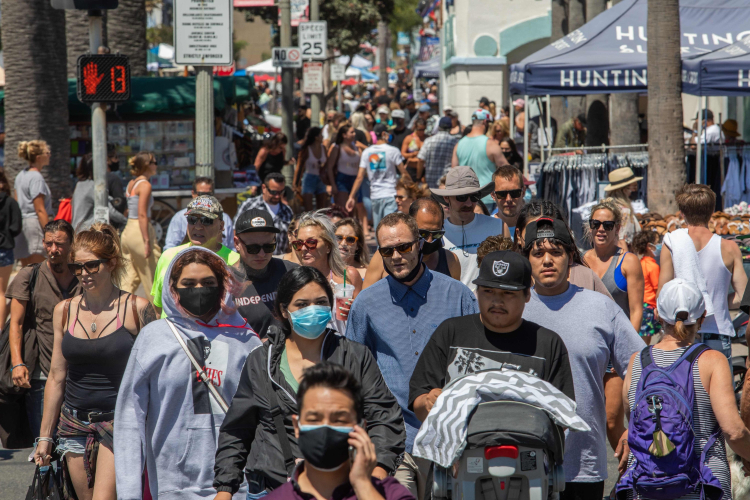
Crowded California Huntington Beach road. (Photo from AFP)
Since the start of the pandemic, one in every twelve Californians have tested positive for COVID-19, and although cases have been at a steady decline, California is a prime example of how catastrophic this pandemic can be.
As COVID-19 cases and deaths across the United States continue to soar, one state in particular stands out from the rest. On December 26th, California COVID-19 cases reached a new daily high of 64,978 COVID-19 cases in one day. This came exactly ten days after California became the first and only state to have over 60,000 new cases in a day with 60,941 new cases on December 16th. What is even more worrisome is California’s death toll; last month, the death toll reached 40,000 total COVID-19 related deaths.
California’s death toll and infection rates have been so tragic, within the first week of the new year hospitals were so overrun to the point that Los Angeles County Paramedics were told not to transport people with low survival rates, regardless of condition. If someone were to have had a heart attack or been in a severe car crash, no hospital beds would be available for them. They would have to rely on pure strength, immunity, or luck to survive their condition. More so, ambulances picking up patients with high enough survival rates were told only to administer oxygen if their oxygen levels fell below 90% because of a statewide oxygen shortage.
California, Southern California especially, is one of the most populated regions in the U.S and has grown to be seen as somewhat of a social hub. Much of California’s economy and businesses are boosted by the constant influx of tourists and new residents, which, regardless of the efforts put in place, refuse to slow down. When asked why California has been hit so hard by COVID-19, Los Angeles County’s health services director Dr. Christina Ghaly identified California’s social attitude as being one of the main culprits for rising case numbers, stating that “more than anything I just think it’s the intermingling that’s happening within our communities. And we see images of this every day on the news.” California has put numerous restrictions on travel both in and out of the state, as well as internal restrictions including a regional stay-at-home order that ended just last week as new cases finally started to drop.
While California’s positivity rate recently reached its lowest in two months, and COVID-19 hospitalizations have been cut to a quarter of their peak on January 6th, there is still a long, dark road ahead. COVID-19 deaths in California are still at their peak, with a total of 14,960 of their 41,344 deaths occurring in 2021 already. However, things could start looking up for Californians, as vaccines have begun rolling out more steadily. Just weeks ago, around 40% of California’s vaccines were being administered; since then, that number has grown to 61%. As Louis Aronson, a professor at UC San Francisco, said, “[If] we took the pace of a couple of weeks ago we could be talking years. If we take the pace of now, you know, months, better part of a year maybe [until everyone is vaccinated].”
If administration numbers continue to grow, California could be entirely or almost completely vaccinated before the end of the year. Since the start of the pandemic, Californians have been in and out of stay-at-home orders and many other restrictions, yet through all the destruction, California may finally see some light at the end of one very long, dark tunnel.